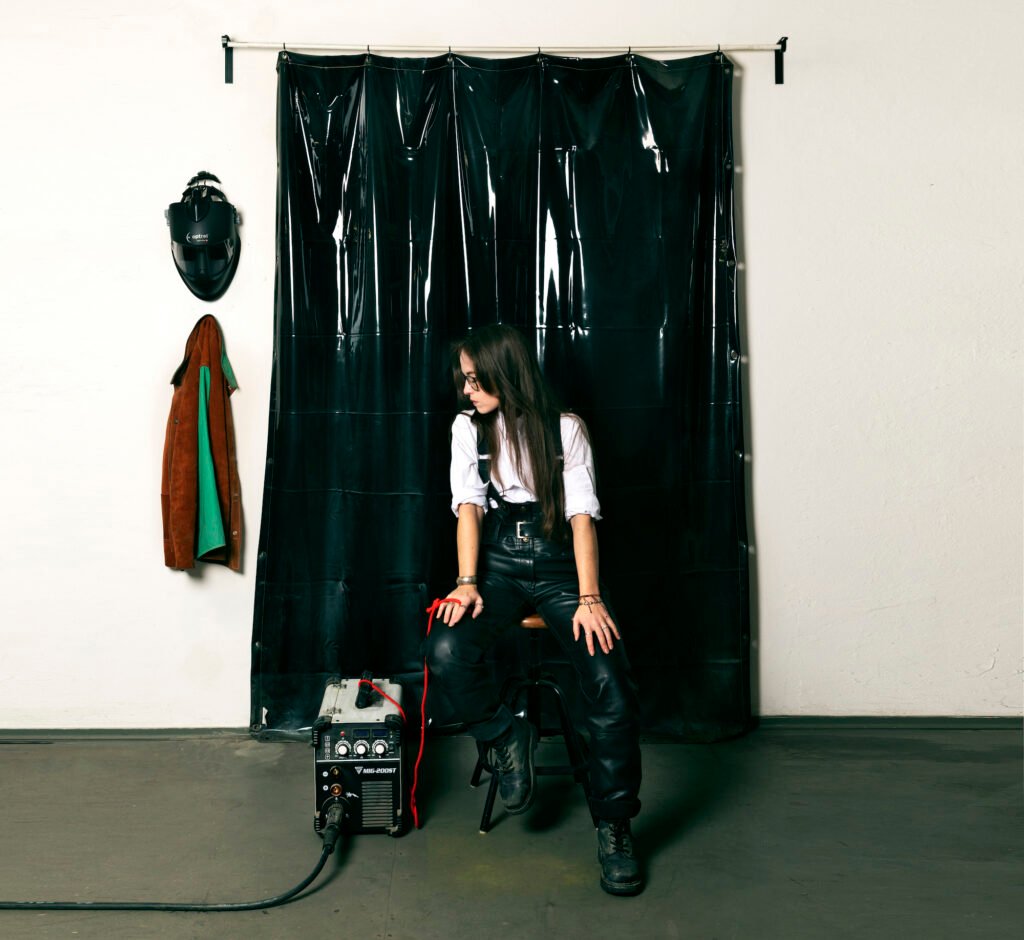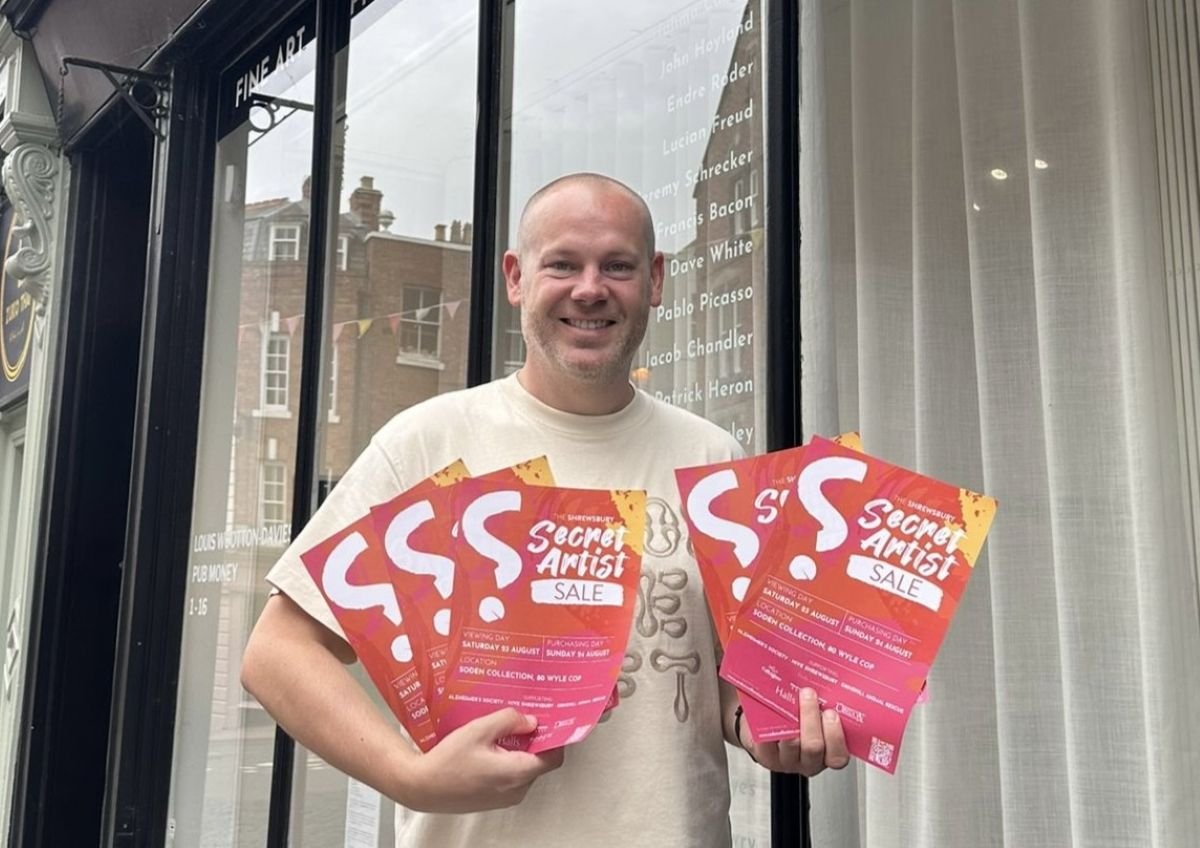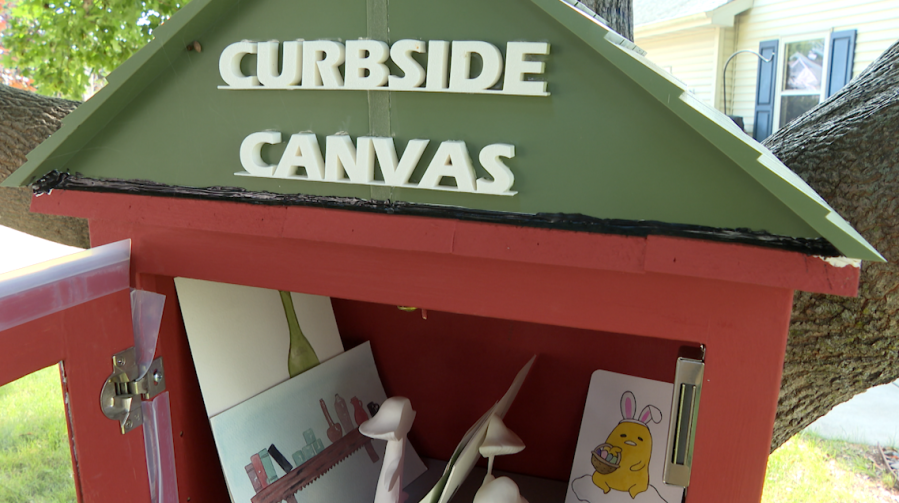The indelible impression left by Viktoria Morgenstern’s work persisted long after our initial encounter. In 2023, due to a work collaboration, I did visit the artist’s studio in the Viennese district called Leopoldstadt a few times. Her atelier, spanning three units within the same building but on different floors, served as the architectural setting for these deep conversations. Among an array of artworks, machinery, and work-related paraphernalia, including miniature round brass components neatly arranged in boxes, every detail resonates with the essence of her artistic endeavors. Our discussions delved into past works, her thinking ability in chapters, her enduring passion for science, a thread that, in another life, might have woven her into studies of geology. Since 2020 the work of Morgenstern comes closer to science and nature, undergoing so work relationships with scientists, research trips to volcanic regions, and the birth of new works addressing Societies in Critical Zones.

Viktoria Morgenstern, portrait, 2023. Courtesy the artist
Erka Shalari: You look for expansion beyond the visual and narrative level in your work. What considerations or thoughts accompany you during the creating process?
Viktoria Morgenstern: I think of my work as a drawing on a multidimensional level. That means, it includes touch, sound, and written or spoken words and is not bound to a two dimensional level. The experience of a work changes, as soon as you are able to go beyond a linear surface. What happens if its appearance is changing with my body changing its position in space? How does it relate to me now? How do I receive it when I am able to experience it by touch? Because there is no single valid angle or picture of the work, everyone is experiencing it differently. So the work comes together in the mind and in the memory we have about the encounter with the work itself. The making of the work for me is a physical experience as well.
In a statement you said: «My work is inspired by my life, personal experiences and impressions». When did you recognize that?
I have always done drawings or was building things, most of my earliest memories are related to create things. Therefore, I can say that my work is a direct response to what I am experiencing, and through my work I channel those inputs and put it into another form. A lot of my work is based on scientific topics and research, but they are always related to what is currently happening in the world and how I perceive it.

Viktoria Morgenstern, As from the beginning, EDEN, 95/63/20 cm, painted steel, 2021, courtesy Viktoria Morgenstern
I am thinking a lot about the way you conceive your exhibitions, during my studio visit time, you have been repeating a few times the word “parcour”. How do you employ it?
I often use the word parcour because it best describes how you go through and experience the work. If it is a group or a series, they are all build up on each other. One work is linked and leads to the other. How your body goes through the space, from one work to the other, is also something I consider when I plan an installation and the space around it. How will different people move from one work to the other? What changes, if I place the works differently, how does the size of the work respond to the body of the viewer? If it is a work you can enter, I also try to consider how a child, or someone in a wheelchair will be able to experience it. My first bigger installation piece where this really came to account was Deep Touch Pressure. I have always dealt with space and the memory of it in my work and those were the first pieces you could actually physically activate. In going from one work to the other, I created a story line that would guide the viewer into the topic. In Ich bin jetzt da / I am here now I had the possibility to curate several rooms, that would end in a space I would share with another artist, who was writing letters to his mother, who has past already back then. So the room we would share was a space of conversation. It was also the final room, that discussed how relationships – the ones you have with your own and those you share with others – come into being and evolve.

Viktoria Morgenstern, Deep Touch Pressure, 2021. Courtesy the artist and kunstdokumentation.com
The initial encounter with your work has been at Parallel Art Fair Vienna 2020, where I not only saw your work but also had the unique experience of wearing and feeling the piece How it Feels on my body. Your extensive research on deep touch pressure adds so many layers to this body of work, and I am eager to delve into a discussion about it.
How it feels was the fourth and last part of the four piece installation called Deep Touch Pressure. The participative work deals with the topic of grieve, and is discussed in four different stages of it, which the viewer could experience by touching and becoming a part of the objects. Deep touch pressure is a way of experiencing touch, which has also a significant impact on a neuroscientific level. The vest you were wearing was made out of led and leather, and weighted about 12 kg. The even pressure on your body activates specific receptors on your skin, which lead to a state of relaxation, calmness and it will even level out specific neurotransmitters and hormones in your brain. You can experience this effect also with a good long old fashioned hug. It is also used in different forms of therapy, like autism, PTSD, anxiety or ADHD. In the vest of the final piece, the outward form, the drawing in space was already gone, what you are left with is only the experience you have with yourself and your body.
Many titles of yours works are posed in forms of questions such as Ich bin jetzt da. Und wo bist du? (“I am here. And where are you?”), or If I stay up all night can I be with you? Why is it like that?
The titles are part of the work and they often lead to one another. They are part of the storytelling, and if the work talks about an unsolved topic, the title in form of a question comes more naturally, instead of a fixed statement. I also feel that this allows to hold more space to fill with your own thoughts and ideas about the topic. I am not so much interested in giving answers or statements, but more about how to open up a stage to discuss what it is said in the work and the topic it is about. The dialogue that I hope I can initiate between the viewer and work is what truly interests me. The aesthetics in my work are very reduced. I am always thinking about “What is really necessary? How much does it need to transfer what I am thinking and feeling about something into another dimension of experience by the senses?“ So there is no line or color, that has not its reason or function. The visual aesthetic itself, resolves out of the bodily necessity to express the thought or emotion into the space. It is like with improvisation, the full piece is the result of a completed movement by the body, that gets led by intuition, and in my case, from one line to the other. That means, I also do not know beforehand what the work is going to look like. It evolves during the process.
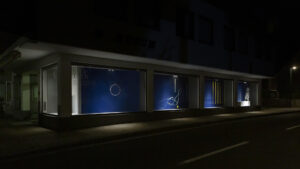
Viktoria Morgenstern, We all drink the same water, 2022. Courtesy the artist
Last time you mentioned tracing a form in your sculptures that dates back to your childhood. What was the experience like to rediscover it?
I have this theory, that everybody has some sort of inner form catalogue, something that comes before language, an expression of the inner senses and movements of the mind through form. When I found some of my earliest childhood drawings, I realized, that there were forms I am still using now to communicate a certain feeling or thought. This catalogue of forms is continuously growing and is getting more detailed and elaborated. Though I believe that this expression of form is unique to every person, some of the basic forms and movements do get recognized by all kinds of different people. I have experienced this a lot in my work, that viewers come to the same conclusion or translation of how that work feels or what it might mean. So there seams to be an overall way of understanding these gestures.
I have the feeling that many works of yours have chapters, whether expressed through given architecture divisions such as in the exhibition We all drink same water, but also the way you work, such as in the sculptures Hug I, Hug II, Hug III. Where comes thinking in the form of chapters?
The way of thinking in chapters comes from when I was little, and used to write a lot of stories. I started taking pictures with a camera also at an early age, to be specific, my mother bought me my first own camera when I was 3 years old. So I think I am used to describe the outer and inner world I am experiencing in stories and chapters, or frames that come one after the other. Lets say, I think experiencing time is an endless juxtaposition of pictures and emotions, bodily sensations and single thoughts. Therefore, it makes sense to me to tell the stories I am talking about also in sequences. Some of them evolve (to the annoyance of some collectors or gallerists), so one work becomes another. They become bigger, develop into a habitat structure and so on. I do not like to think of an art work as an absolute or fixed object. I guess thats also why the three-dimensional work I am doing has so many unexpected views to offer. There is this element of coincidence I cannot plan. And I think that is what keeps the work interesting and developing: it is good to not have control over everything.

Viktoria Morgenstern, The last Habitat, 2023. Courtesy the artist
How is it to work with steel?
The material has a lot of mechanical qualities that makes it perfect to draw within space, and its cultural background of being a product of an anonymous industrial culture allows me to appropriate it and transfer into a different language and meaning. But on a philosophical and personal level, I think the more interesting part is that it helps in living the ephemeral world. I can not fully explain what I am experiencing, but the material has some way of grounding and calming me. When I am working with steel, I feel like I am in touch with the world on a deeper level. It did not occur to me that the earths core is actually made of liquid metals, mostly iron, until last winter. So maybe that has something to do with it.
So, how did the perspective of the material have changed for you and how is it linked to your current work?
This year I have hit a point in my work and personal life, where I struggled to navigate all this challenges we are facing as beings on this earth, on a singular as well as on a collective level. During some research I did look for some answers and new orientation when I found myself on the top of a volcano. Suddenly I felt I was right there where I should be, and at the beginning, where everything starts and ends at the same time. I intuitively went back to the origin of my core material, and I realized I was more connected to my work and the world as I thought. I work it out through my drawing, and through the drawing I can connect, understand, question and explore all this very difficult and complex relations. That is thus what steel means to me.

Viktoria Morgenstern, The last Habitat, 2023. Courtesy the artist
Traces of you in the works, on steel surfaces…
I do leave traces of the process in the work. It feels kind of weird to polish everything down and neglect the process it went through, all the hard decisions that were made sometimes under a lot of physical labour. I do not see any reason to take this part of the work away, so I am not doing it. I am a very haptic person, so therefore touch is the second most important sense for me after the visual. How a work feels when you touch it is mostly or even in some works more important than how it looks like. Sometimes this makes me being obsessed about surface finishings and can lead to grinding a single work by hand up to 40 hours, in order to get the feeling that I want.

Viktoria Morgenstern, With a sense of touch, hand-brushed steel, 94 x 53 x 57 cm, 2022, courtesy Viktoria Morgenstern
A closing question: Viktoria, how would you describe this moment of your life and work?
I feel I have entered another stage of my work, professionally and on a personal level. One part of developing my work was always my interest in science and nature. The connection and intertwining between art and science is becoming increasingly stronger. I have started to work with different scientists ranging from geology, vulcanology to biology and sociology during my project Societies in critical zones. The questions are: “What is, and what can be?“ During my trips in those volcanic areas (also in Sicily), I realized that there is this area of contact between the active volcano and its surrounding, I call it the critical zone. It is a zone that endures a lot of fundamental changes in a very short time, and it requires a lot of resilience, innovation and also interspecies collaboration as well as creativity for life to keep thriving in those areas. How things react and are connected to each other is what interests me – what strategies does life find to overcome what at first looks like it would be only disaster and destruction? I use this questions and observations as a platform to start my work on. I am trying to give from to this concepts of ideas in my oeuvre, ranging from multidimensional drawing to sound and touch, and some of them will be active. I am also working on a book that holds all those experiences and the materials I collect during the project. It will include texts, interviews and other scientific sections but also personal pieces I am collecting, as well as photography. I also started a photographic series that documents the disappearing of the birch tree forest on Etna. I discovered that the same is happening in forests in Austria: some areas have already lost all their birch trees. Some of the changes that are happening in the the world are very loud and clearly visible, but some of them are very slow and silent.
Erka Shalari
Info:
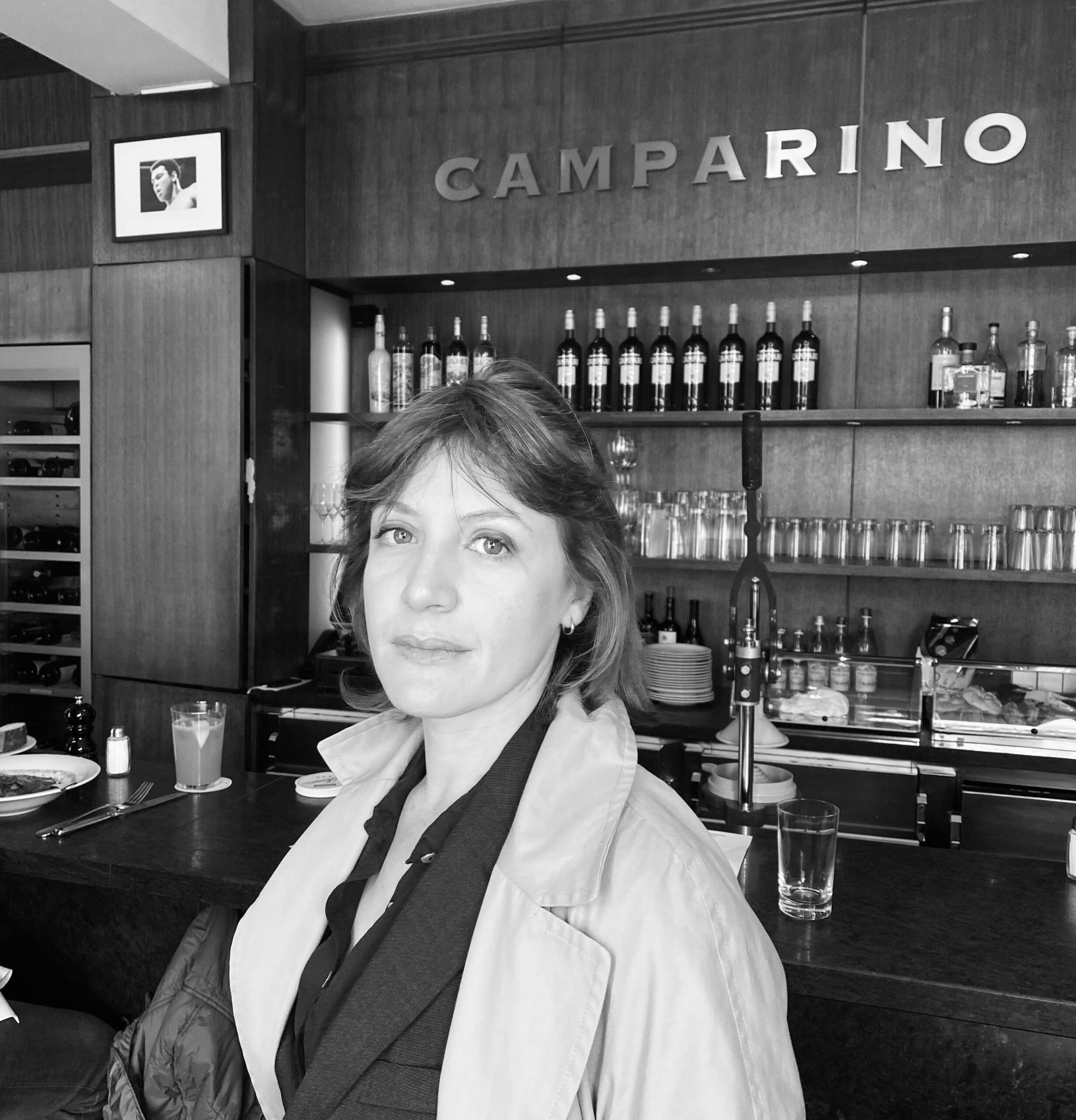
Erka Shalari is a Vienna based art writer and editor. Her work is committed to uncovering distinctive artistic positions in contemporary art. The work methodology is strongly influenced by psychology, epistemological works, as well as affects and rituals.

